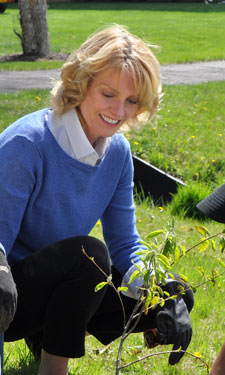 A couple of months ago, I was following an online discussion about the challenges and issues associations are facing or will be facing in the near future. While I could certainly relate to several points that were brought up, what struck me most was that it didn’t matter where the association was located, what industry it was in or how many members it had; the issues and challenges were the same.
A couple of months ago, I was following an online discussion about the challenges and issues associations are facing or will be facing in the near future. While I could certainly relate to several points that were brought up, what struck me most was that it didn’t matter where the association was located, what industry it was in or how many members it had; the issues and challenges were the same.
I was reminded of this in March when NRPA and the American Planning Association (APA) cohosted a full-day roundtable discussion, “The Role of Parks in Shaping Successful Cities.”
The idea behind this event was to bring together park and recreation leaders and city planners from key urban areas to discuss how these two professions can leverage each other’s assets to build successful cities. We were prepared to spend the day discussing “urban” issues — things like gangs, crumbling infrastructures and rapid population growth — and how park agencies can be key players in addressing these problems.
What surprised me was that we didn’t hear any of that.
Instead, cities like Philadelphia, Chicago, Seattle and Los Angeles shared stories and examples of how they work with other governmental departments on planning, how they build public-private partnerships and how they engage communities. And they did this work to stimulate economic growth, improve the overall health of the community and address vital environmental issues.
Isn’t that what we are all doing?
Whether you are urban, suburban or rural, your agency can be the driver of economic recovery, a leader in environmental stewardship and a vital component of a healthy community. But as we learned during this event, you have to insert yourself into these discussions. You have to be aggressive. City after city shared how they made strategic decisions to work with other governmental departments, how they created cross-departmental working groups, and how they developed opportunities to show the value and importance of parks, recreation and open space.
If your agency is not involved in these discussions, now’s the time. If park and recreation agencies are to be viewed as providers of essential services in the future, they have to be at the table. They have to show their value in economic, social and environmental terms.
One of the key benefits of association membership is that you can learn from your colleagues — you can copy the great ideas and learn to avoid the pitfalls. Just as I learned from following the online discussions at my professional association, you can learn from your colleagues in urban environments. They are grappling with issues and challenges that, if they haven’t yet made it to your community, they will in the near future.
NRPA learned a lot during this event, and we will be sharing those lessons in the months to come. Look for a white paper, professional development and training opportunities designed to help you position your agency for the future.
Barbara Tulipane, CAE, is NRPA's President and CEO.

